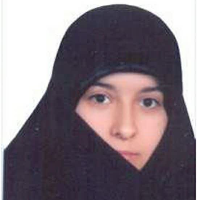z. ehtesham
-
هدف
پژوهش حاضر با هدف مقایسه اخلاق حرفه ای اعضای هیئت علمی از دیدگاه اساتید و دانشجویان انجام شد.
روشروش پژوهش، توصیفی- پیمایشی و جامعه آن، کلیه اعضای هیئت علمی(2059 نفر) و دانشجویان(15654 نفر) دانشگاه تهران است که با نمونه گیری طبقه ای متناسب، 267 نفر از هیئت علمی و 484 نفر از دانشجویان به طور تصادفی انتخاب شدند. جمع آوری داده ها با پرسشنامه توسعه یافته اخلاق حرفه ای مدرسان(قموشی و همکاران، 1396) انجام شده است. پایایی پرسشنامه ها با استفاده از ضریب آلفای کرونباخ(برای اعضای هیئت علمی=0.95 و برای دانشجویان=0.97) محاسبه و روایی ابزار نیز با روایی محتوایی و سازه تایید شد.
یافته هاوضعیت اخلاق حرفه ای از دیدگاه دانشجویان در سطح متوسط و از دیدگاه اساتید در سطح بالاتر از متوسط قرار داشت. نتایج MANOVA نشان داد مولفه های اخلاق حرفه ای اعضای هیئت علمی بر اساس جایگاه(دانشجو-استاد) دارای تفاوت معنادار است. وضعیت مولفه های نسبت به فراگیر، محیط و حرفه اعضای هیئت علمی در پردیسهای دانشگاه تهران دارای تفاوت معنادار است. وضعیت مولفه اخلاق نسبت به محیط در تعامل بین پردیس و جایگاه، تفاوت معناداری را نشان داد.
نتیجه گیریدانشگاه ها و موسسات آموزش عالی، بایستی کاوش در وضعیت اخلاق حرفه ای اعضای هیئت علمی خود را از دیدگاه افراد و ذی نفعان مختلف در اولویت قرار دهند.
کلید واژگان: اخلاق حرفه ای, اعضای هیئت علمی, دانشجو, دانشگاه تهرانObjectivesThe present study aims to compare the professional ethics of scientific board members from the viewpoint of faculty members and students.
MethodThe research method is descriptive-survey. The population of the study was all faculty members of the University of Tehran (N=2059) and all students of Tehran University (N=15654). Proportional stratified sampling method, 267 faculty members and 484 students were selected randomly. For data collection, questionare of professional ethics of teachers of Ghamooshi's et al (1396) with five components of professional ethics: Towards ultra self, towards oneself, towards learners, towards the environment and toward the profession was used. The reliability of the questionnaires was calculated using the Cronbach's alpha coefficient for the faculty members α =0.95 and for students sample α =0.97. Validity of the instruments was confirmed by content and construct validity.
ResultsThe results showed that the status of professional ethics of faculty members from the viewpoint of students was at the average level, while in the view of the professors was above average. MANOVA results showed that the ethics components of faculty members based on the place (student-teacher) had significant difference and the status of component towards learners, towards the environment and towards the profession of faculty members in faculties of Tehran University had significant difference, At the end status of component based on the environment from the viewpoint of interaction between faculties and position had significant difference.
ConclusionUniversities and higher education institutions, should give the priority to explore the status of faculty members professional ethics from the viewpoint of individuals and different stakeholders.
Keywords: professional ethics, faculty members, student, university of tehran
- در این صفحه نام مورد نظر در اسامی نویسندگان مقالات جستجو میشود. ممکن است نتایج شامل مطالب نویسندگان هم نام و حتی در رشتههای مختلف باشد.
- همه مقالات ترجمه فارسی یا انگلیسی ندارند پس ممکن است مقالاتی باشند که نام نویسنده مورد نظر شما به صورت معادل فارسی یا انگلیسی آن درج شده باشد. در صفحه جستجوی پیشرفته میتوانید همزمان نام فارسی و انگلیسی نویسنده را درج نمایید.
- در صورتی که میخواهید جستجو را با شرایط متفاوت تکرار کنید به صفحه جستجوی پیشرفته مطالب نشریات مراجعه کنید.


